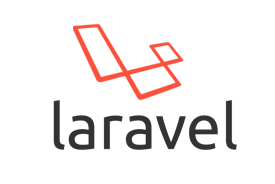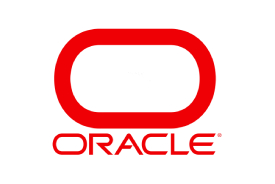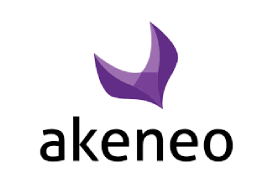Robotic Process Automation (RPA) is a user-friendly software technology tailored for anyone seeking to streamline digital tasks. It’s a configurable software designed to execute assigned business processes under your supervision. Mimicking human interaction, RPA seamlessly engages with applications and systems, operating 24/7 with heightened speed and 100% accuracy. Simply outline the tasks and rules for automation, then let RPA take care of the rest.
“The Cutting-Edge RPA Solution for Your Business Efficiency“
Advantages & Benefits
Enhanced Operational Efficiency
RPA streamlines workflows, automates repetitive tasks, and ensures precision, freeing up human resources for higher-value activities.
Accelerated Productivity
By expediting workflows and enhancing reliability, RPA significantly boosts productivity across organizational functions.
Cost Savings
RPA optimizes processes, reduces manual errors, and enhances efficiency, resulting in substantial cost savings and rapid return on investment (ROI).
Seamless Integration
RPA seamlessly integrates with existing systems and applications, breaking down technology silos and fostering enterprise-wide collaboration and efficiency.
Employee Morale Boost
By automating mundane tasks, RPA empowers employees to focus on more meaningful and rewarding work, enhancing job satisfaction and morale.
Enhanced Adaptability
RPA scales effortlessly while adhering to stringent security and compliance standards, ensuring adaptability to evolving business needs.
Features
Robotic Process Automation

Rule-based and Adaptive Automation
RPA follows predefined rules while leveraging data patterns to adapt swiftly to new information and evolving requirements.

High-fidelity at High-volume
Enterprise RPA delivers consistent, compliant performance for high-volume operations, ensuring business continuity and efficiency.
Defined Data Input/Output
Integrating seamlessly with AI tools, enterprise RPA extends its capabilities beyond structured data, enabling comprehensive automation solutions.

Scalable Architecture
Enterprise RPA dynamically scales to accommodate increasing process volume and user base, ensuring performance and efficiency even as organizations grow.

Low-code/No-code Development
With intuitive low-code/no-code development, enterprise RPA empowers non-technical users to create and manage automations, fostering widespread adoption and innovation.

Seamless Interoperability
Enterprise RPA seamlessly integrates with diverse systems and applications, leveraging native connectors and APIs to facilitate effective communication and data access.

Robust Audit and Governance
Equipped with built-in audit trails and reporting features, enterprise RPA ensures transparency, compliance, and operational accountability.

Enhanced Security Measures
Featuring robust security protocols and certifications, enterprise RPA maintains a consistent security posture across all automation activities, safeguarding sensitive data and ensuring regulatory compliance.

Cloud-native Architecture
Cloud compatibility enhances flexibility, accessibility, and scalability, minimizing infrastructure costs and ensuring continuous enhancements and high availability.
Important: Our artificial intelligence services are constantly being updated by our expert AI team. If you need any feature that doesn’t currently exist, please email us at sales@vexsoluciones.com to request it for consideration in our upcoming updates.
How to Get Started?
Robotic Process Automation (RPA) is software that performs tasks using the same set of digital skills as humans, and more. Think of RPA as a digital workforce capable of interacting with any system or application to carry out repetitive digital tasks, such as copying and pasting, web data extraction, performing calculations, opening and moving files, analyzing emails, logging into programs, and connecting to APIs. Despite its extensive capabilities, setting up automations is surprisingly simple and intuitive, akin to recording and sharing a video on your smartphone.
While its usage is equally straightforward and intuitive, enterprise-grade RPA is also designed to meet the security, system integration, scalability, and compliance requirements of large organizations. Robust and resilient, enterprise RPA can orchestrate thousands of automations simultaneously while ensuring high availability and performance across all business operations. Enterprise RPA is part of the comprehensive intelligent automation strategy necessary for organizations to effectively automate processes.

Rule-Based and Adaptable
Enterprise RPA not only follows predefined rules but also learns from data patterns to quickly adapt to new information.

High-Fidelity at Scale
Enterprise RPA provides consistent performance that adheres to standards for repetitive but business-critical operations involving thousands of automations.

Process Integration
While standalone RPA is limited to structured data, enterprise RPA seamlessly integrates with artificial intelligence tools that leverage unstructured data.
When looking for an enterprise RPA solution, it’s essential to consider several key aspects to ensure its effectiveness and compatibility with your company’s needs. Here are some important features to consider:
1. Scalability
Enterprise RPA can dynamically scale to handle high volumes of repetitive tasks in large organizations without compromising performance. It’s easily scalable across departments with addable licenses for various users.
2. Low-code and no-code
Non-technical users can easily create automations without coding knowledge, fostering collaboration in larger organizations. This approach, known as citizen development, is crucial for digital transformation.
3. Interoperability and integration
Enterprise RPA seamlessly integrates with both legacy systems and new applications through native connectors, enabling automation of tasks requiring data access from multiple sources.
4. Organization
Enterprise RPA allows the management and coordination of multiple automations simultaneously, essential for large organizations with concurrent processes.
5. Audit and governance
Built-in audit trails and permission controls ensure transparency and compliance, while robust security measures maintain a consistent security posture across all automations.
6. Native cloud architecture
Cloud-based RPA offers flexibility, accessibility, and scalability, with automatic scaling and continuous capacity monitoring.
7. Data privacy and compliance
Compliance with regulations is ensured, with sensitive information encrypted and stored in the cloud only as needed.
RPA is an automation tool for everyone. Here’s how to start your automation process, drive organization-wide transformation, and prepare your automation strategy for the future.
1. Preparation: Outline your digital transformation vision.
From the outset, identify automation solutions that align with your business objectives and broader vision.
- Ask plenty of questions, both internally and externally.
- Reach out to partners, vendors, and other trusted organizations already in the RPA process.
- Putting people at the center of your plans is crucial for success. Involve HR from the start and engage a wide cross-section of stakeholders, change agents, and RPA advocates.
2. Provisioning: Evaluate and select your best solution and support model.
Choosing an RPA solution that’s part of a stronger, more comprehensive product suite, such as an intelligent automation platform.
- Find a provider who can demonstrate expertise and stability, and who is committed to ongoing adaptation and innovation. It’s important to note that automation will only succeed if employees have autonomy. That means you’ll need to choose a tool that’s technically powerful and accessible to business users, not just IT specialists.
3. Engagement: Establish an RPA standards and oversight center.
Scaling comprehensive RPA for business process automation relies on widespread RPA adoption.
- Start strong by creating a Center of Excellence (CoE) for the entire organization.
- The CoE should focus on effectiveness and governance, be responsible for creating standards, and should disseminate tools, templates, and best practices. It’s an RPA center of expertise, set up to help the entire organization kickstart their own automations.
4. Expansion: Going beyond RPA to intelligent automation.
Digital transformation is a process, not a goal. RPA lays the groundwork for an innovation approach that adds long-term value.
- It’s important to incorporate this into your RPA plans at every stage. At VEX AI, we help companies start using RPA with intelligent automation in mind. This way, you can move beyond automating workflow steps and seamlessly transition to the next stage of transformation.
Our Clients

We implemented RPA for payment reconciliation and saved over 40 hours a week on repetitive tasks. The process is now faster and error-free.

With robotic automation, we were able to reduce patient registration and insurance validation time by 80%. Staff can now focus on higher-value tasks.

We automated payroll and attendance processes. The robot works day and night, flawlessly and with complete precision. It has changed the dynamics of the department.

RPA has been a key tool for scaling. We automated invoice entry and document management, allowing us to serve more clients without increasing staff.

The implementation was quick and customized. Today, we have bots working in the back office, freeing up valuable time for our team.

We reduced to minutes what previously took hours, such as policy analysis and document validation. Robotic automation exceeded our expectations.

We automate tasks like inventory updates and report generation. The bots run continuously and error-free. A scalable solution!

Thanks to RPA, we now have quality control reports automatically generated every day. This means greater accuracy, fewer errors, and faster decisions.

We automated request registration and data validation. Our response times improved dramatically, as did customer satisfaction.
Frequently Asked Questions about Robotic Process Automation
Discover the most common questions and answers from the community:
Robotic Process Automation (RPA) is a software technology that automates repetitive, rules-based tasks by deploying software robots, or bots, to mimic human actions and interactions with digital systems and applications.
RPA works by deploying software robots to automate repetitive tasks such as data entry, copying and pasting, form filling, and more. These bots interact with various software applications, systems, and databases as a human would, following predefined rules and workflows to execute tasks efficiently.
Implementing RPA offers several benefits, including increased productivity, cost savings, improved efficiency, improved accuracy, faster processing times, and the ability to free up human employees to focus on more strategic tasks.
Tasks that are repetitive, rule-based, data-driven, and high-volume are well-suited to automation with RPA. Examples include data entry, invoice processing, report generation, customer onboarding, and HR processes.
Attended RPA involves bots working alongside human employees to assist with tasks in real time, while unattended RPA operates autonomously without human intervention, typically running in the background on servers or virtual machines.
The success of an RPA implementation can be measured by factors such as cost savings, productivity gains, error reduction, process efficiency improvements, ROI (Return on Investment), and employee satisfaction.
Challenges and risks associated with RPA implementation include bot scalability issues, integration complexities with legacy systems, security concerns, compliance risks, employee resistance to change, and the need for ongoing maintenance and support.
When selecting an RPA platform, consider factors such as ease of use, scalability, integration capabilities, security features, vendor support, pricing, and whether the platform aligns with your organization’s specific needs and requirements.
RPA can benefit a wide range of industries, including banking and finance, healthcare, insurance, manufacturing, retail, telecommunications, and more. Any industry with repetitive, rules-based processes can potentially benefit from RPA.
Some best practices for a successful RPA implementation include starting with a pilot project, engaging stakeholders early, providing comprehensive employee training, establishing a center of excellence, prioritizing security and compliance, and continuously monitoring and optimizing RPA processes to maximize efficiency.
























































































